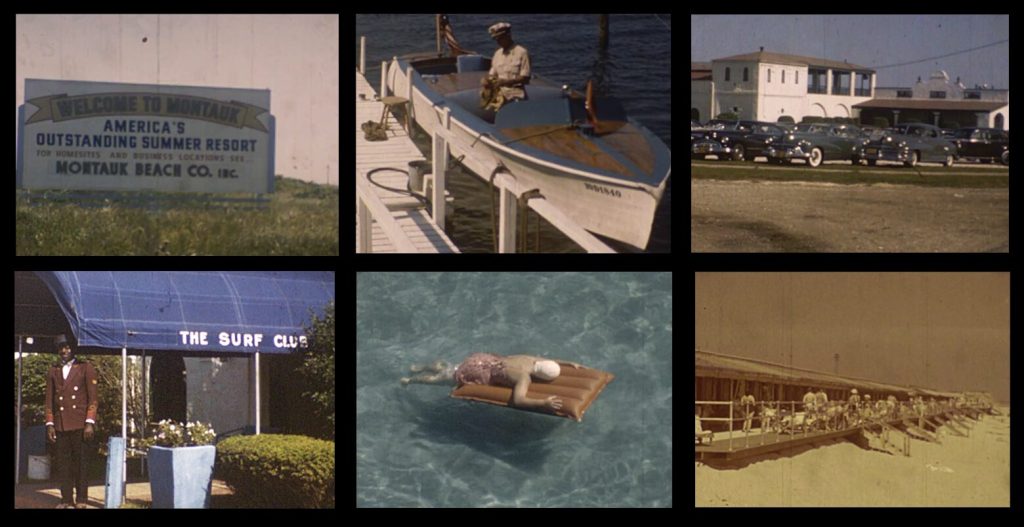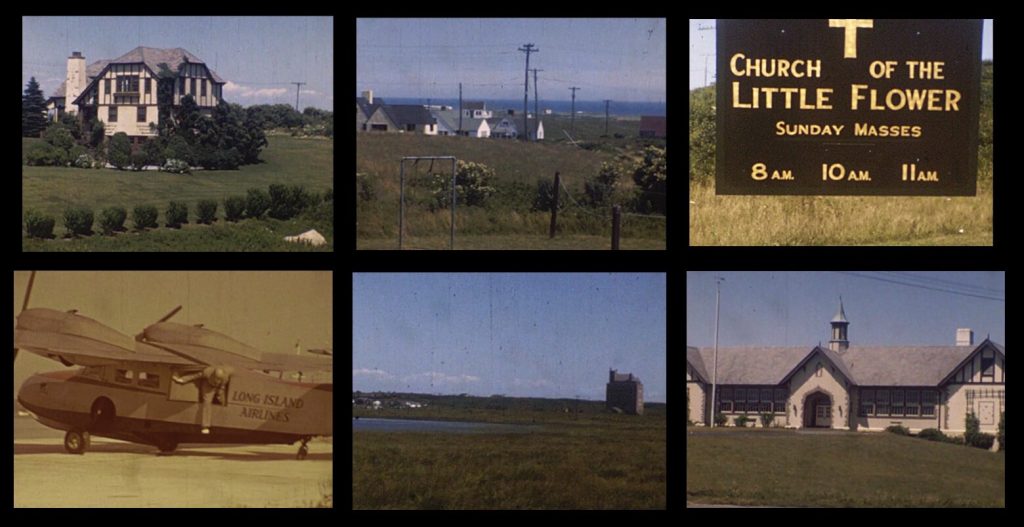
A large billboard reading “Welcome to Montauk, America’s Outstanding Summer Resort,” greeted tourists as they arrived for the summer of 1947. The Montauk Surf Club and Pool parking lot was full of coupes and station wagons that delivered travelers to the seaside retreat. Guests loafed around in the public pool, while others enjoyed the cabanas and sandy beaches.
A slow pan of Fort Pond’s shoreline shows an undeveloped wetland, the brick tower administration building standing tall among the lush grasslands surrounding downtown. Moving images of construction and unfinished residences portray a new layer of development after Carl Fisher.

Scenes like these and others were documented in a 15-minute film shot by John A. Craft during the summers of 1947 and 1948.
John A. Craft moved to Montauk in the 1940s from Brooklyn to head construction for the U.S. Navy’s torpedo-testing station on Fort Pond Bay. He later opened John A. Craft Real Estate and Insurance on Main Street in Montauk. Of the 25 films donated to the Montauk Library by the Craft family, more than half depict scenes of Montauk’s businesses, homes, shorelines, boat rides, and storms.
The films, originally shot on 16 mm Cine-Kodak Kodachrome, had to be sent out to Eastman Kodak in Rochester to be developed. Fun fact, we know from the return address that John Craft had Box #1 at the Montauk Post Office, and postage for one reel cost 24 cents.

In 1923, Eastman Kodak introduced 16 mm film as a more portable and affordable alternative to the 35 mm film format. They released an “outfit” including a Ciné-Kodak camera, Kodascope projector, tripod, projection screen, and splicer, for $335, equivalent to $6,265 today. The 16 mm film format was one of the first safety films to use acetate as its base, phasing out the highly flammable 35 mm nitrate film, which was discontinued in 1952.
The Montauk Library recently digitized John A. Craft’s collection of 16 mm films. This film is available to view on YouTube and in the library’s Local History Exhibit Center through June. Stay tuned as we upload additional films from this collection.

Reply or Comment